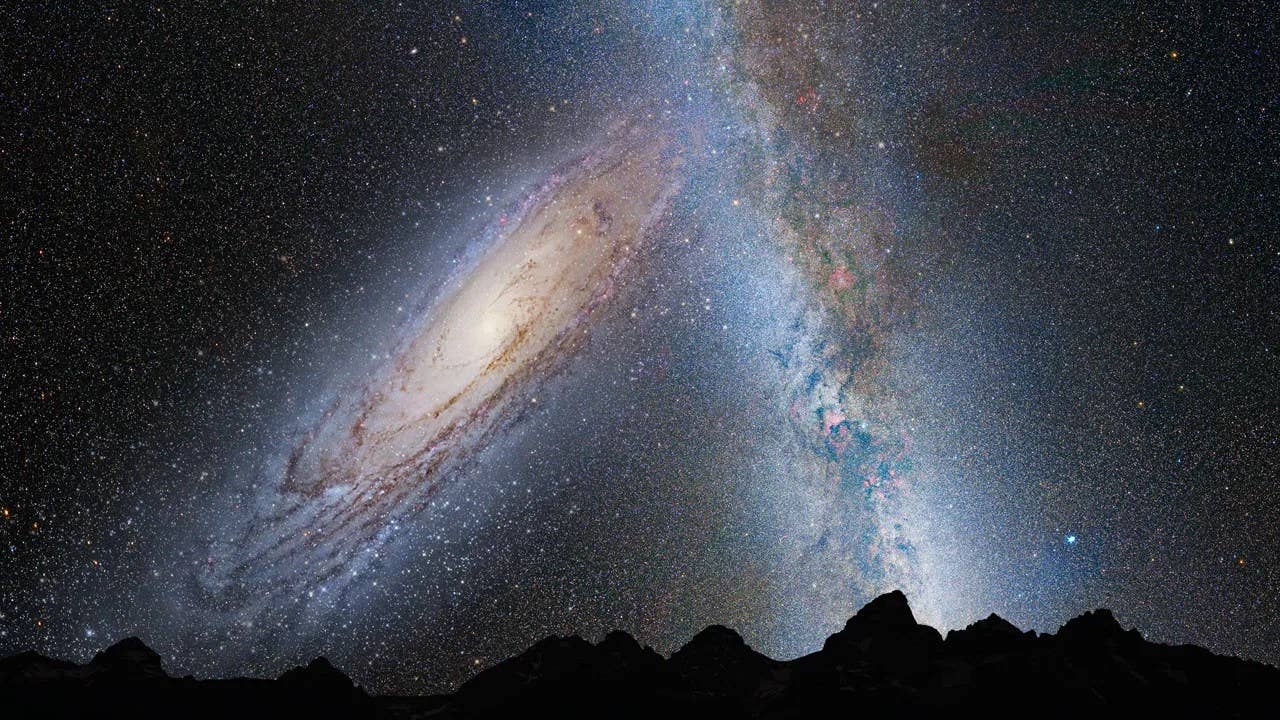Why No Aliens? They Live in Video Game Universes Like a Future ‘No Man’s Sky’

Share
Evidence suggesting that our universe is tailor-made for habitable planets — ones that could reasonably support life — continues to pile up. And as humanity flings cosmos-observing technologies further into the sky, we’re developing a deeper appreciation of just how likely it is that life could have emerged anywhere.
So, why is our universe so void of activity when it seems suitable for beings who might create technologies like ours to emerge?
Many have speculated on the Fermi paradox, the name given to this head-scratching question, but last year I profiled one promising theory called the transcension hypothesis.
Proposed by futurist John Smart, the theory suggests that technological civilizations — and the Fermi paradox assumes there would be many by now — don’t colonize outer space (and thus flood the cosmos with signatures we could easily find). Instead, they move toward inner space by building vast digital realities on computers much smaller than we can detect.
Citing the fact that computation today is moving toward smaller and more powerful systems, the theory suggests we haven’t found advanced aliens because they’ve already vanished from this reality into computational ones they’ve built themselves.
It’s a crazy idea, but with the release of No Man’s Sky last week — a video game declared among the most anticipated titles in the history of gaming — that theory looks more plausible.

With some 18 quintillion planets, the No Man's Sky game map is universe-sized.
The hype for the game’s release was justified by the incredible scale of the game’s map.
No Man’s Sky has few objectives other than to explore an expansive collection of flora and fauna, but it’s the map’s 18 quintillion life-sized planets that stir up so much wonder. To get a sense of the size, consider that spending just one second visiting every planet in the game would take longer than the remaining 4.6-billion-year lifespan of our own real sun. Add too that the planets come with their own weather systems, ecologies, and bizarre forms of life, each one offering a complex biome to explore.
What makes the game so mesmerizing is that it’s bottled up the cosmic awe associated with our own impossibly sized universe and packaged it in a six-pound Playstation computer. Hundreds of thousands of your fellow humans are blasting off to travel this digital universe.
Be Part of the Future
Sign up to receive top stories about groundbreaking technologies and visionary thinkers from SingularityHub.


More than the size, the game has also captured an innate drive to explore the unknown.
No Man’s Sky was built with a tool called procedural generation, meaning that most of the game was not built by humans but by algorithms and fractal math. This means not even the game’s creators have any idea what’s in there. Not only will no one person ever come close to seeing everything in the game, the entire collection of humankind spread across countless generations could only hope to uncover a tiny fraction of this place.
Since release, the game has disappointed some for falling short of the hype. But it isn't so much about what it is today but what it suggests is possible in coming years.
So, it might very well be that our technologically advanced alien neighbors never made it to outer space, but instead moved into their own universe-sized realities — like more advanced versions of the ones we’re now beginning to build.
And so maybe that’s why we haven’t found any yet.
Image credit: No Man's Sky
Aaron Frank is a researcher, writer, and consultant who has spent over a decade in Silicon Valley, where he most recently served as principal faculty at Singularity University. Over the past ten years he has built, deployed, researched, and written about technologies relating to augmented and virtual reality and virtual environments. As a writer, his articles have appeared in Vice, Wired UK, Forbes, and VentureBeat. He routinely advises companies, startups, and government organizations with clients including Ernst & Young, Sony, Honeywell, and many others. He is based in San Francisco, California.
Related Articles

How Will the Universe End? The Dark Eternity That Awaits Us Trillions of Years From Now

The Era of Private Space Stations Launches in 2026

Data Centers in Space: Will 2027 Really Be the Year AI Goes to Orbit?
What we’re reading
